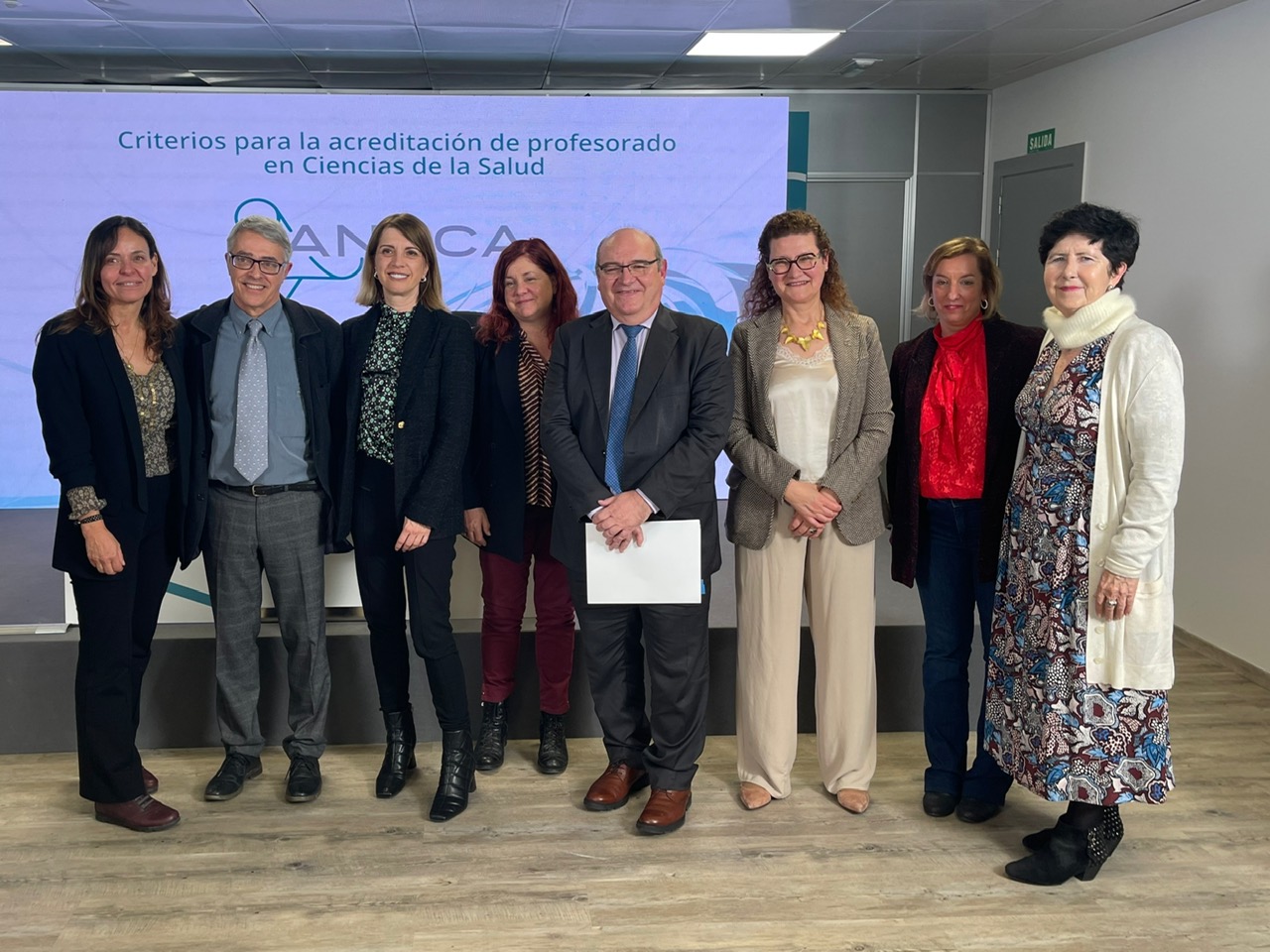Updating the criteria for accreditation of teaching staff in Health Sciences
-
20/12/2022
It allows accreditation to be adapted to the changes that the different health and university systems have undergone in recent years.
The event was attended by the Secretary General for Universities, José Manuel Pingarrón Carrazón, and the Director of ANECA, Mercedes Siles Molina.

The Secretary General for Universities, José Manuel Pingarrón Carrazón, and the Director of ANECA, Mercedes Siles Molina, today presented the update of the criteria for teaching staff in Health Sciences which will begin to be applied from January 2023, once the corresponding commissions have been formed, and which represents the materialisation of the necessary update required for the evaluation in this branch to adapt to the changes that the different health and university systems have been registering in recent years and which had led to imbalances in the way in which this evaluation had been carried out.
ANECA, as well as the Conference of Deans of Medicine, had identified problems that the current criteria were presenting in research, teaching, transfer and professional activity. On the basis of this information, proposals for modification of the current criteria were drawn up and presented to the different agents: Conference of Deans of Medicine, Conference of Deans of Nursing, Federation of Spanish Scientific Medical Associations, ISCIII, AEI, and trade union organisations (CC.OO., UGT, CSIF, STES Intersindical), representatives of the network of doctoral programmes in Health Sciences.
The result is the model presented today, which has been worked on with the general aim of making it more simplified, easier to understand and open to introducing improvements in the assessment of professional activity and transfer, which will compensate for other aspects of research and teaching, traditionally more in line with other disciplines.
This update, in short, has sought to integrate solutions that are as cross-cutting as possible and, therefore, is articulated around two general lines: on the one hand, the establishment of homogeneous criteria, within each commission, so that the requirements for the figures evaluated are gradual between what is requested for tenure and what is requested for professorship; and, on the other, that the criteria are aligned, as far as possible, for the three commissions of the Health branch, always respecting that they cannot be identical, given that each commission is made up of areas with their own dynamics and requirements.
In this sense, in the research dimension, the main improvements introduced allow the range of publications evaluated to be widened by changing the terciles (used until now) to quartiles, which has a positive impact on the requirements for tenured university researchers.
Thus, in the sections where until now the first decile (D1) was taken into account, now the first quartile (Q1) will be taken into account, so that from considering only 10% to considering 25% first; secondly, where before the first tercile (T1) was considered, now the first and second quartiles (Q1 and Q2) will be considered, so that from considering 33% first, 50% will be considered first; finally, where previously the first and second terciles (T1 and T2) were considered, now the first three quartiles (Q1, Q2, Q3) are considered, which means that instead of valuing 66% first, 75% is considered first.
Finally, ANECA, through the commissions that have worked on the changes, has undertaken to examine other types of production and see if, in the future, they can be integrated and recognised.
In terms of teaching, the transversal strategy has been aimed at resolving problems such as the difficulty of adequately certifying the years and hours of teaching, the justification of teaching quality, the number of hours required and the teaching of honorary figures, among other aspects.
In the transfer and professional activity dimension, the aim has been to model it in order to compensate for the usual deficit in research or teaching that is recorded, in particular, in healthcare professional profiles.
In this way, they have been adapted to the profiles of each field and the number of merits that can be obtained for each activity has been increased and can even be doubled or tripled. This is essential because, until now, the number of merits that could be computed for each activity was limited, which was an obstacle when the candidate had a very well-defined profile.

The Commissions
The three Health Sciences evaluation commissions have been involved in this initiative to update the criteria. The areas that comprise them will be reorganised as follows:
B6: Biomedical Sciences and Related Clinical Specialities, which integrates the areas of Human Anatomy and Embryology; Pharmacy and Pharmaceutical Technology; Pharmacology; Physiology; Histology, Immunology; Preventive Medicine and Public Health; Microbiology; Parasitology; and Toxicology.
B7: Clinical Medicine and Medical-Surgical Specialities, which includes the areas of Pathological Anatomy; Surgery; Dermatology; Medicine; Legal and Forensic Medicine; Obstetrics and Gynaecology; Ophthalmology; Otorhinolaryngology; Paediatrics; Psychiatry; Radiology and Physical Medicine; Urology; and Traumatology and Orthopaedics.
B8: Health Specialities, grouping together the specialities of Anatomy and Comparative Pathology; Nursing; Stomatology; Physiotherapy; Nutrition and Bromatology; Animal Medicine and Surgery; and Animal Health.
The changes that have been made are as follows: Pathological Anatomy, from B6 to B7; Comparative Anatomy and Pathology, from B6 to B8; Stomatology, from B7 to B8; Pharmacy and Pharmaceutical Technology, from B8 to B6; Pharmacology, from B8 to B6; Preventive Medicine and Public Health, from B8 to B6.
